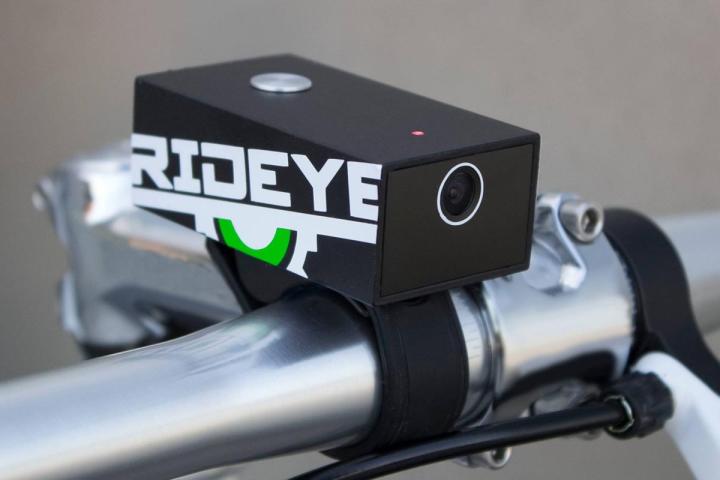
Somewhat similar to the concept of the Helmet of Justice, the RIDEYE is a camera system strapped to the front of a bicycle that allows cyclists to capture footage of potential accidents as well as identifying license plate information in a hit-and-run scenario. Providing functionality identical to dash-cam systems in police cruisers, the RIDEYE records high-definition 720p video at a wide, 120 degree field of view. Recording 2.5 hours of video at a time, the RIDEYE automatically makes space on the internal memory card by deleting the oldest videos to continue recording footage during a ride.
In addition, the RIDEYE has an internal triple-axis accelerometer that detects when the bike has been in a crash. When the sensor is tripped by impact with a vehicle, the current footage is specially marked to keep it from being overwritten as the RIDEYE continues recording. If the cyclist hasn’t been hurt in the incident, they can also hit the silver button on top of the drive to halt recording and save the file.
When the cyclist gets to a computer, they can plug it via USB to watch the recorded footage. This could also be useful for police responding to an accident as they would be able to review the footage immediately with a laptop in order to identify a driver responsible for the accident.
Regarding recording specifics, the 1280 x 720 resolution video is recorded at 30 frames per second and includes a 512 Kbps mono audio track of the surrounding environment. The 6,800 mAh lithium-ion battery pack should provide battery power for the RIDEYE to operate for 24 hours of total recording time. With commutes likely taking an hour or less each way, a typical cyclist would only have to charge the RIDEYE every couple weeks.
To store the 2.5 hours of video footage, the device comes with 8GB of internal storage memory for the video. However, it doesn’t appear as if there are any plans to allow users to upgrade the memory to record more data. The casing protecting the camera is made out of aircraft-grade aluminum and the rubber strap is adjustable based on the size of the bicycle’s handlebars.
One disadvantage to the RIDEYE is that it wouldn’t be able to record impact that occurs behind a cyclist. In addition, if a cyclist is run off the road, the camera may end up at an awkward angle and completely miss crucial information identifying the party at fault. However, cyclists could hypothetically mount a second RIDEYE on the rear of the bike in order to capture footage of drivers behind them.
At the moment, the creator of RIDEYE is seeking an initial investment of $32,000 on Kickstarter to fund this black box system for cyclists. Early backers can secure a system for $119 with a proposed delivery window of March 2014. Assuming the project is fully funded, the team behind RIDEYE plans to start manufacturing as early as October with final testing and assembly occurring during November and December. As with all projects on Kickstarter, be aware that manufacturing issues often delay the intended delivery window of the final product by weeks or even months.


